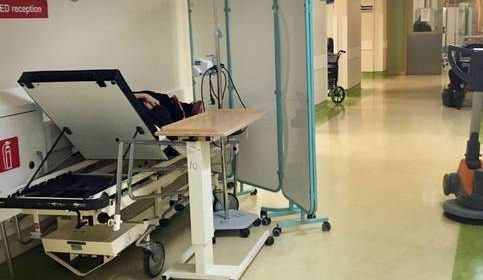Nurses brand trolley crisis 'obscene' as number of patients waiting for a bed soars to 679

The number of patients on trolleys soared to 679 today – the highest daily figure in 2019 so far, and the second-highest ever recorded.
Figures from the Irish Nurses and Midwives Organisation reveal the pressure hospitals are under even before the worst of the winter weather.
The union said the overcrowding was “simply obscene.”
The worst-affected hospitals include:
- University Hospital Limerick: 63
- University Hospital Cork: 60
- Letterkenny University Hospital: 47
- South Tipperary General Hospital: 40
- Sligo University Hospital: 39
- University Hospital Waterford: 39
The nurses’ organisation pointed to South Tipperary General as “a hospital in crisis.”
A spokesman said that despite being one of the country’s smaller hospitals, it has more patients on trolleys than some of the largest.
The union blamed a lack of capacity and staff in the public health service as the key driver behind the figures.
The HSE has implemented a “go slow” recruitment freeze, which sees well over a thousand frontline posts unfilled.
“UCC’s Prof. Jonathan Drennan identified a need for at least 180 extra emergency department nursing posts across Ireland to care for admitted patients, in a report commissioned by the HSE and Department of Health.
“However there was no provision made in the recent budget for the roles.”
INMO General Secretary, Phil Ní Sheaghdha, said: “This is simply obscene. Winter has not even started, and Irish hospitals are overwhelmed. Our members are faced with an inhumane working environment, while patients are put at ever-increasing risk.
“50,000 people marched to support nurses and midwives during the strike. They did so for an end to short staffing and a better health service. The government’s delay in implementing the strike settlement, along with the recruitment freeze, has driven more nurses and midwives out of the public health service.
“It’s time for extra emergency staffing, an end to the recruitment ban, and for hospitals to curtail services until safe patient and staff levels are reached.”
Source: Read Full Article